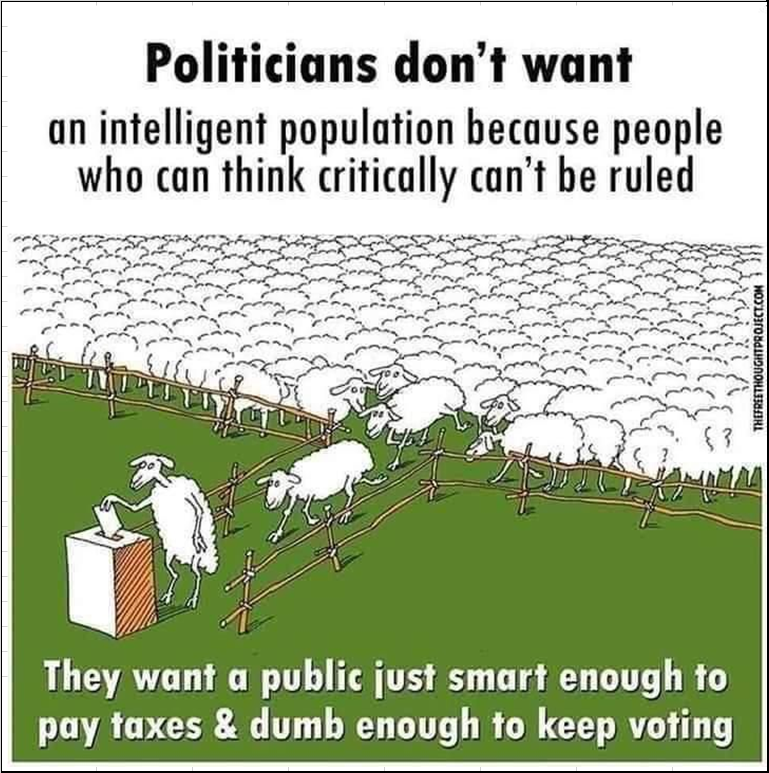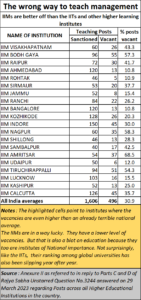The malaise in higher education
RN Bhaskar
If one goes by news items – often peddled out by the government — the country is on a roll. All sectors are doing well. That includes higher education. And India should become the Vishwaguru (or teacher to the world) by 2030.
That is what the government would like us to believe (https://pib.gov.in/PressReleseDetailm.aspx?PRID=1894517#:~:text=As%20per%202011%20population%20projections,Male%20GER%20since%202017%2D18).
- Enrollment in higher education increases to 4.14 crore, crossing the 4-crore mark for first time; increase of 7.5% from 2019-20 and 21% from 2014-15.
- Female enrollment reaches 2 crore mark, increase of 13 Lakh from 2019-20.
- Significant increase of 28% in enrolment of SC students and 38% in enrolment of Female SC Students in 2020-21, compared to 2014-15.
- Substantial increase of 47% in enrolment of ST students and 63.4% increase in the enrolment of Female ST Students in 2020-21, compared to 2014-15.
- Significant increase of 32% in OBC Student enrolment and 39% in Female OBC Students, since 2014-15.
- Notable increase of 29% in Student Enrolment and 34% in Female Student Enrolment in the North Eastern Region in 2020-21 since 2014-15.
- Gross Enrolment Ratio (GER) has improved from previous year for all social groups.
- Enrollment in Distance Education has increased by 7% in 2020-21 from 2019-20.
- Number of Universities has increased by 70, number of Colleges has increased by 1,453, in 2020-21 over 2019-20.
- Gender Parity Index (GPI) has increased from 1 in 2017-18 to 1.05 in 2020-21.
- Total number of faculty/teachers increases by 47,914 from 2019-20.
Anyone looking at these statements would be compelled to believe that education in India is being managed amazingly well. While the statement “Gross Enrolment Ratio (GER) has improved from previous year for all social groups” may be true, what is not being told is that India’s GER stands at just 27.3 — significantly lower than most other countries in this region. Some of the states have a GER of 7-15 (https://asiaconverge.com/2023/04/the-state-of-education-in-india/). Not a pretty picture.
But as pointed out in these columns just last week, (https://bhaskarr.substack.com/p/the-state-of-education-in-india), the state of education in India is not rosy.
The perspective becomes messier when one studies available numbers. All these numbers are taken from government records presented before the parliament. And they make one wonder if the government is not just not interested in education, as a WhatsApp image suggests.
Understaffed institutions
This is a problem which has plagued India through successive governments. The very definition of literacy appears to have been designed to conceal rather than to reveal. Governments have tried to show that they have improved education – but by focussing on numbers and not on quality or facilities. Budgetary allocations for education have remained meagre (https://asiaconverge.com/2020/01/pre-budget-series-barbarians-at-the-gates-of-education/). The number of educational institutions has increased – even the number of Institutions of National Importance (https://www.education.gov.in/institutions-national-importance). But they lack the facilities that such institutions must have. For instance, some of the prestigious AIIMS (All India Institutes of Medical Studies) don’t have proper buildings, facilities and even teachers (https://twitter.com/manickamtagore/status/1573192926909571072). Worse, according to government regulations for NEET, the reservation criteria involves 27% seats for OBC, 10% seats for EWS, 15% seats for SC and 7.5% seats for ST are reserved in Central Universities and state medical colleges. More about medical colleges will be discussed in a separate article.
Take the problem with teachers first. According to the government’s own admission as revealed in Annexure II submitted before the Parliament in reply to Parts C and D of Rajya Sabha Unstarred Question No.3244 answered on 29 March 2023 regarding Posts across all Higher Educational Institutions in the country. A copy of the actual submission before the Parliament can be got from https://asiaconverge.com/wp-content/uploads/2023/04/2023-03-29_lok-sabha_education_POSTS-in-HIGHER-EDUCATIONAL-INSTITUTIONS-IN-India.pdf)
That data shows that on an average 33.5% of the teaching posts in institutes of higher education remain vacant. In some states like Tripura, Jharkhand and Uttarakhand and West Bengal the vacant posts could be higher than 40%. In other words, the government has been quick to increase the number of educational institutes, even though it has neither the resources nor desire to provide the right infrastructure or even teachers.
What does the government do when it doesn’t even have the basic minimum of teachers? It often has three ‘solutions’. The first is to dumb down the syllabus, so that the least amount of teaching can be done with the teachers that are available. Second, the government reduces the number of holidays for students, to make good for the shortage of teachers. The third is to let the students fend for themselves, and make up for this lapse by granting grace marks at multiple levels. This author has been teacher, examiner and moderator for examinations conducted by a reputed university, and the general observation is that students scoring as little at 20% can be given grace marks at various levels to raise them to 35% marks — often considered as the minimum level for promoting them. This way, the government wards off student agitations, ‘needless’ expenditure and still can claim that it has more students in its educational institutions. No wonder, so many graduates are unemployable!
IITs under siege
The situation gets worse when one considers the premier engineering institutions – known as the IITs (or Indian Institutes of Technology). These are largely funded by the central government and are Institutions of National Importance.
Till three decades ago, there were only five IITs. In a desire to boost the number of students holding an IIT branding – the most coveted by industry both within India and overseas – as well as to win votes from different states, successive governments increased the number of IITs. But they provided neither the infrastructure nor the number of teachers (https://asiaconverge.com/2016/04/iit-fees-hike-fix-institutes-essential-focus-foundation/).
Students in some IITs have hostel accommodation where three people are clubbed together even though the rooms were designed for single occupancy. Overseas, students are encouraged to accept single occupancy accommodation. But the temptation to enrol students even before the hostels can be set up (if the intent had been there) has worsened the situation, The cheek by jowl existence, coupled with a pressure cooker environment for academic excellence, causes some students to break down. Not surprisingly, as many as 33 students have committed suicide during the last five years (https://indianexpress.com/article/education/33-iit-students-died-by-suicide-in-last-five-years-govt-in-parliament-8499516/). Had the students been allowed to have rooms for themselves, maybe, some of the students may have chosen to continue living.
Compounding all this is the government’s own political desire to reserve more of the student-seats for people from reserved categories. These are students who have not scored as much as their peers. Not surprisingly, when students compare the joint entrance examination rankings, it is easy to find out which student did not gain admission based on merit, and instead got in only through the window of ‘reservations’. Now when a general category student is made to share a room with a student who is not considered an academic equal, the tensions become worse. They are compounded by different eating, reading, and sleeping hours that students may have. One student’s way of studying, living should not grate on the nerves of another student.
The unfortunate suicide last month thus brought with it allegations of caste discrimination (https://www.ndtv.com/india-news/iit-bombay-reacts-to-caste-discrimination-charge-after-students-death-3781153).
But then the party which made caste discrimination reach a breaking point is the government. The government is therefore culpable – in giving seats of merit to students who do not reach those levels of excellence.
Ideally, reservations should be limited to high school. Special inputs should be provided to students who come from underprivileged backgrounds. They need these inputs to help them overcome their backwardness. They have a right to compete with their peers for admission to premier institutes and for jobs.
But what is logical, is not politically acceptable. The desire to play saviour even at levels where this can be counterproductive is very strong. Successive governments have prised open the wounds along the fault lines, and have made higher education a messy situation where talent and merit are easily compromised. Even student lives are lost during this process.
If the government wants to reduce the tensions along caste lines, the least it can do is to allow students to get independent rooms. But when political imperatives become more important than financial resources or academic needs, this is bound to happen.
Ideally, the government should do what institutions like BITS Pilani do – admission is only by merit. But a government-owned institution is more vulnerable to political pressure and compulsions. Expect such private institutes to do better than the IITs in the coming decades.
This malaise afflicts the premier Indian Institutes of Management (IIMs) as well. In one way, the IIMs are a bit luckier – their vacancy levels are a bit lower than those for the general average and the IITs. But they suffer from a teacher vacancy level of 30.9% — unacceptable for any premier institute of learning in the world – especially for those that are also categorised under Institutions of National Importance.
Reserved vacancies
The key reason for the teacher vacancies at all levels appears to be the government’s fixation of filling them only with reserved categories. Nowhere does this come out as  clearly as in the government’s own admission before Parliament in reply to Lok Sabha Unstarred Question No.3196 on 20 March 2023, regarding Vacant Teaching Posts of Reserved Categories in Central Education Institutes (a pdf copy of the downloaded spreadsheet can be got from https://asiaconverge.com/wp-content/uploads/2023/04/2023-03-20_lok-sabha_education_Vacant-Teaching-Posts-of-Reserved-Categories-in-CEIs.pdf). All the premier institutions — IITs, IIMs NIITs and AIIMS – are Central Education institutions.
clearly as in the government’s own admission before Parliament in reply to Lok Sabha Unstarred Question No.3196 on 20 March 2023, regarding Vacant Teaching Posts of Reserved Categories in Central Education Institutes (a pdf copy of the downloaded spreadsheet can be got from https://asiaconverge.com/wp-content/uploads/2023/04/2023-03-20_lok-sabha_education_Vacant-Teaching-Posts-of-Reserved-Categories-in-CEIs.pdf). All the premier institutions — IITs, IIMs NIITs and AIIMS – are Central Education institutions.
Just look at the data that is given out by the government. Most of the teaching posts go abegging just because there are no suitable candidates from the ‘reserved’ categories.
There is another problem. Even if a ‘suitable’ candidate from the reserved categories is found, it is difficult to ask that person to leave in case he or she is found to be wanting, or if the students begin to boycott classes because the teacher is not good enough. You need to remember that students will definitely not tolerate compulsory attendance for a class where the teacher is found wanting. At such times, a reserved category teacher often seeks protection by claiming that it is harassment of persons belonging to such categories.
Disgust and discrimination
The result is a toxic mixture of disgust and discrimination that could have been avoided in the first place. If there is anything more dangerous than reserved categories for students, it is reservation for teachers. All institutes of national importance were exempted from the reservation clause, till some politicians decreed otherwise, riding roughshod over protests from education administrators.
Now the government has blood on its hands. It is solely responsible for plummeting academic standards, student suicides and a rapid migration of teachers from government-owned and managed institutes to well-run privately managed educational institutes. The government decision to allow foreign universities will accelerate this drift of teachers.
If the government wants to allow foreign universities, it must first ‘liberate’ India’s institutions to focus on merit for teachers and students alike. Else, India will find the best of students and teachers flocking to privately run institutions – foreign or domestic does not matter.
The pursuit of reservation, teacher vacancies and the failure to provide decent accommodation will mean a degradation of the best centres of learning that this country has. It could mean the end of the Indian education dream.








































COMMENTS